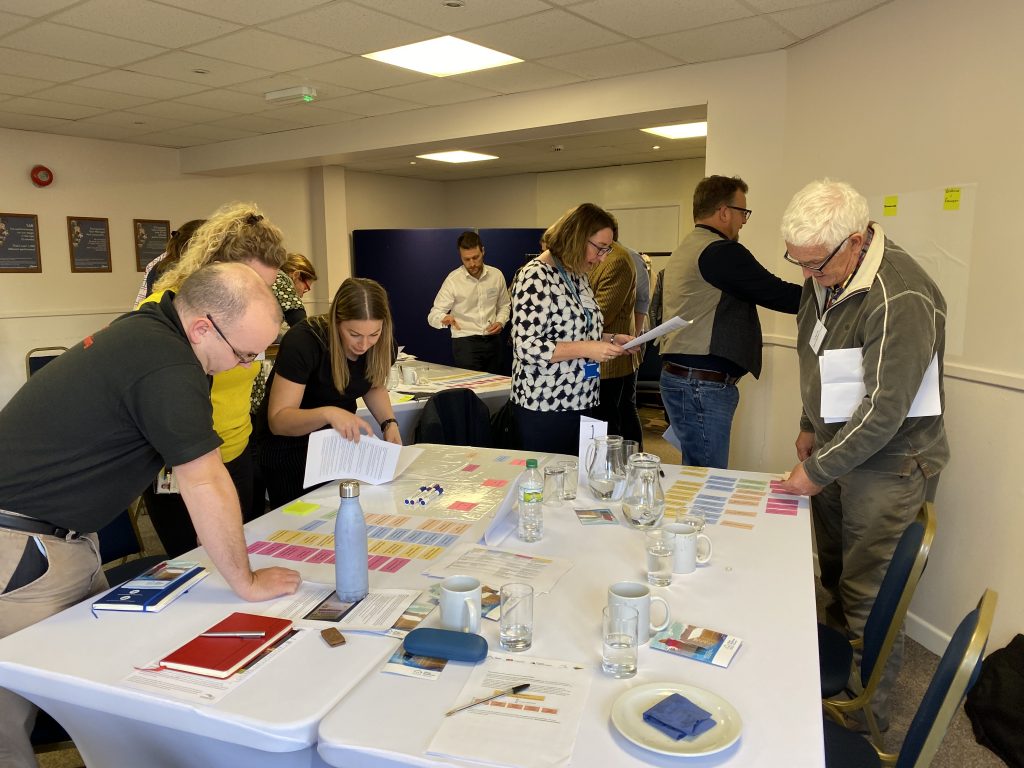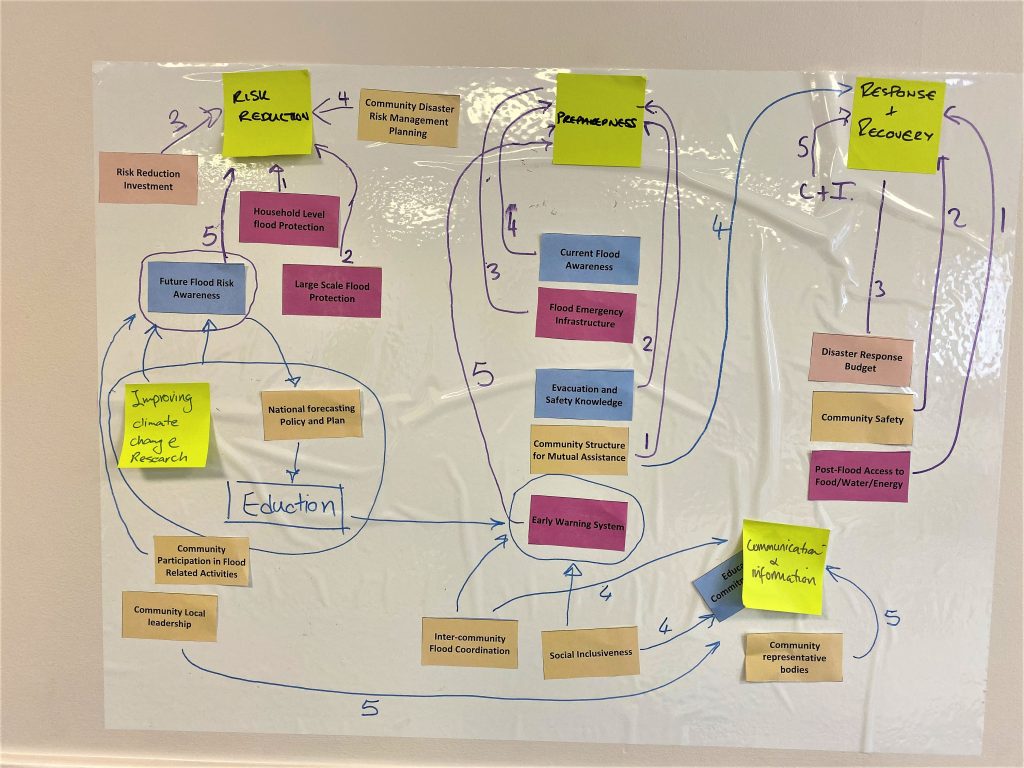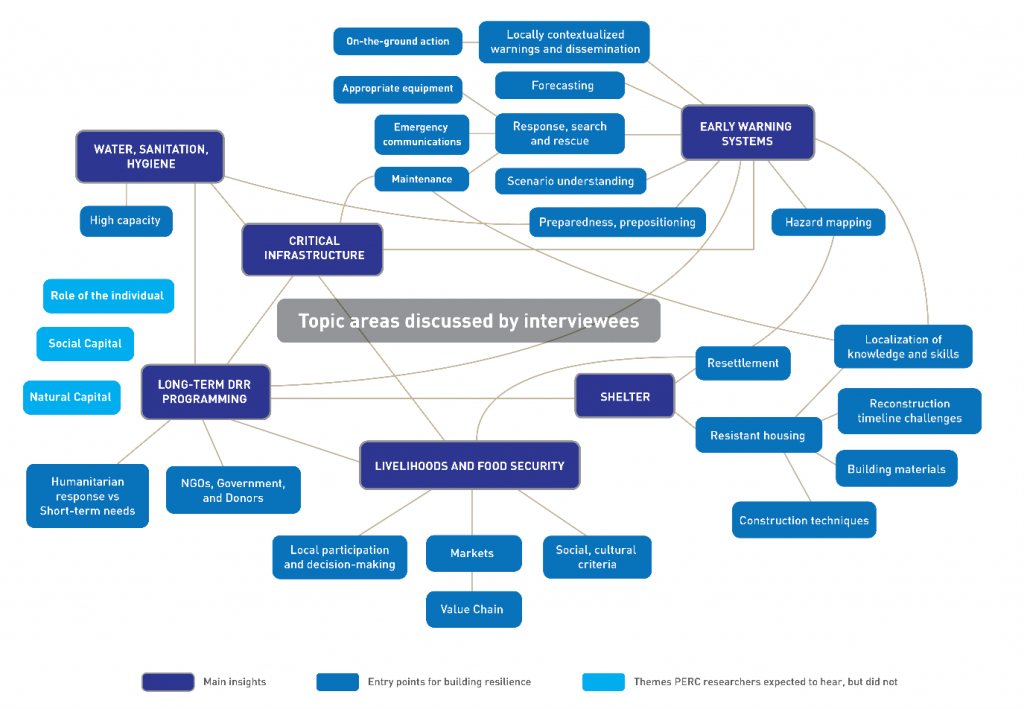Identifying pathways for building resilience is a critical element of our work. Mind-mapping can come in handy to encourage participatory decision-making – especially when used in parallel with assessment tools developed by the Zurich Flood Resilience Alliance.

What is mind-mapping?
A mind map is a way to visually organize information into a hierarchy or system, showing relationships among pieces of the whole. It is often used to support day-to-day decision-making by visualizing the process of thinking and reasoning that goes on inside our minds. In a collective decision-making process, it can be used to collect and visually represent various perceptions, priorities, and preferences related to a common problem.
There are different methods for developing and analysing mind maps, such as Fuzzy Cognitive Mapping, Causal Loop Diagram, Participatory System Mapping, and System Dynamics — see here for more information. What these all have in common is they produce a diagram that illustrates how individual concepts or variables are connected.
What are the strengths of mind-mapping?
Mind maps can be used to support participatory decision-making. They are often constructed via focus group discussions or key-informant interviews, either in real-time together with interviewees, or by facilitators/researchers based on the collected information.
Mind-mapping methods employ local knowledge and perceptions to identify relationships between components of a complex system. In the context of climate resilience, for example, mind maps can be used to identify relationships between various aspects of resilience, as well as co-benefits of resilience interventions. In addition, mind mapping supports co-production of knowledge on issues for which we either do not have enough quantitative data (and therefore need to rely on the knowledge and experience of local actors), or are required to include diverse preferences, interests, and values of stakeholders.
What are the limitations?
Mind maps do not, however, provide solutions or best strategies. The strength of mind maps is in helping local communities and groups see a full picture of the problem, and the potential direct and indirect impacts of potential actions to address it.
What goes into a mind map is often based on the perceptions and knowledge of local actors, so the results can be subjective and even biased. It is therefore important to use this technique for the correct purposes, such as co-production of knowledge and supporting participatory decision-making. Involving those who have the best knowledge of the problem will help develop a model closest to reality.
Mind-mapping with the FRMC
The Flood Resilience Measurement for Communities (FRMC) approach helps local communities measure their resilience to flood risks, and therefore identify gaps and opportunities. However, the question of how to decide upon suitable interventions cannot be answered by resilience measurement alone, which is where mind-mapping comes in.
Following the implementation of the FRMC in the UK coastal town of Lowestoft, we applied Fuzzy Cognitive Mapping (FCM) together with local stakeholders to map out the relationships between resilience indicators.
Community flood resilience includes social, financial, human, natural, and physical components interacting with and influencing each other, which means any intervention for increasing resilience will have multiple direct and indirect impacts. Understanding the relationships between resilience strengths and weaknesses through FCM eventually helped decision-makers identify the most impactful long-term intervention.
Mind-mapping with the PERC
The Alliance’s award-winning PERC methodology relies on qualitative information collected from interviews and document analysis to understand why a hazard event became a disaster, and to identify actionable recommendations for future events. Mind-mapping complements the PERC process because it supports data analysis and helps to visualize and understand the ‘why’ behind a hazard event.
Researchers used mind maps during PERCs following Cyclones Idai and Kenneth in 2019, and following the 2020 floods in Tabasco, Mexico. In both cases, mind-mapping was used to structure the available data, understand the system within which the events occurred, and identify what worked and what didn’t. From this they were able to tease out the connections between key elements and their components. For example, as illustrated below in the mind map from the Idai and Kenneth PERC, long-term Disaster Risk Reduction (DRR) programming is a key variable linked to the other central ‘nodes’ in the system (Early Warning Systems, shelter, livelihoods and food security, and critical infrastructure).
Conclusion
As these examples demonstrate, mind maps are helpful analytical and organizational tools that can be used in parallel with other methodologies. Because of their visual and non-linear structure, mind maps can be especially helpful in highlighting connections, stimulating idea generation, and improving the overall visualization of the system within which you are working – elements that can ultimately support stronger decision-making, and identify pathways for building resilience.
To find out more about the objectives of the Zurich Flood Resilience Alliance, head here.



Comments